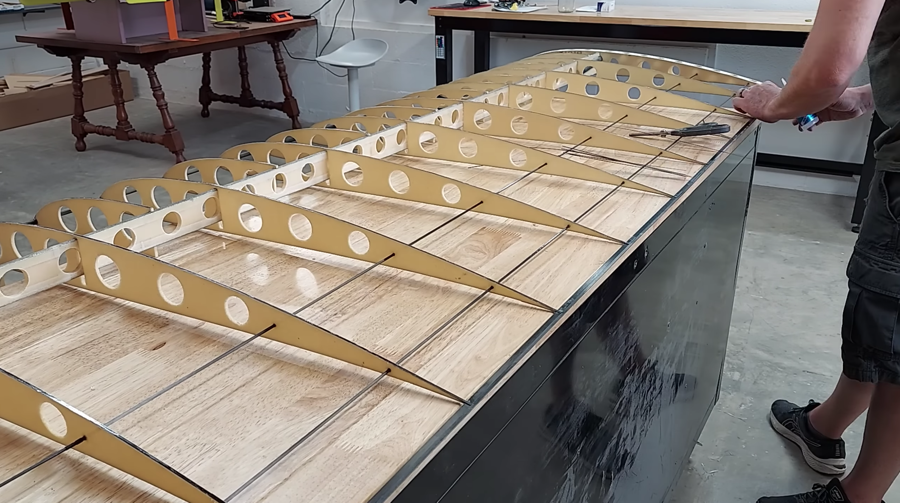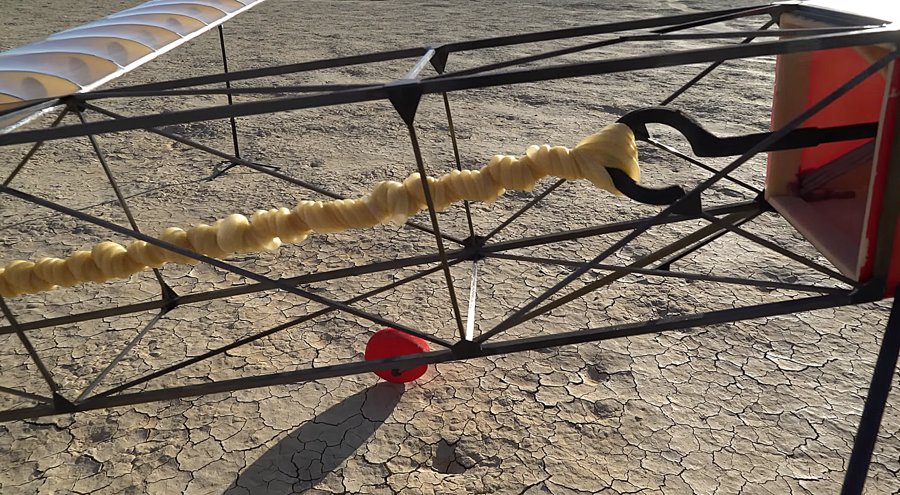Kavin Gustafson of the Think Flight YouTube channel set out to build the world’s largest rubber band powered airplane. How does he do it and how long will it fly?
With a wingspan of 16 feet (almost 5 meters), this remarkable feat of engineering and childhood nostalgia captures the essence of the simple rubber band toys that sparked the aviation dreams of countless kids and grown-ups, including the Wright brothers.
Scaling up the toy proved challenging, but Gustafson was persistent in his design and material modifications during the seven-month build.
Some background on rubber band-power via The National Museum of the United States Air Force (.pdf):
“In the balsa wood model, potential energy is stored in the twisted rubber band which drives the propeller. When the rubber band untwists, energy is converted from potential energy into mechanical kinetic energy, and work is done in turning the propeller. The propeller provides the thrust, which pushes the airplane forward according to Newton’s Third Law of Motion.
“As the plane moves forward through the air, lift generated by the wings allows the airplane to fly.”
Though he started with a lithe foam to mimic balsa wood, the toy’s traditional material, optimal performance required something even lighter. Through trial and error, Gustafson selected and tested materials like thin fiberglass, tiny carbon rods, and multiple airy coverings. Precision engineering—specifically light-weight trusses and a well-formed propeller—helped achieve an aerodynamic design.
Gustafson also used a significant amount spear fishing rubber to create a large rubber band.
Why aren’t there torsion-powered airplanes? “A big part of the answer lies in surface area,” he explains.
“When you double the size of a rubber band, its surface area and power do not double; they actually increase by the square. This poses a challenge because the volume and weight of the rubber band increase by the cube. Gasoline-powered aircraft don’t face this issue as their energy output increases by the cube due to the consumption of fuel. Consequently, a rubber band-powered airliner remains an elusive concept.”
Watch these related videos next on TKSST:
• Float, a documentary about rubber band-powered model airplanes
• How to make an Air Surfing Foam Walkalong Glider
• How to make a cotton ball launcher
• How to make a popsicle stick and rubber band paddle boat
• Newton’s Three Laws of Motion
• Newton’s Laws of Motion demonstrated with wooden blocks
Bonus: Is this the largest Rubik’s Cube in the world?
Curated, kid-friendly, independently-published. Support this mission by becoming a sustaining member today.





